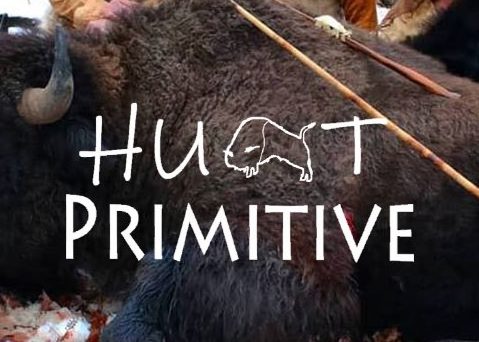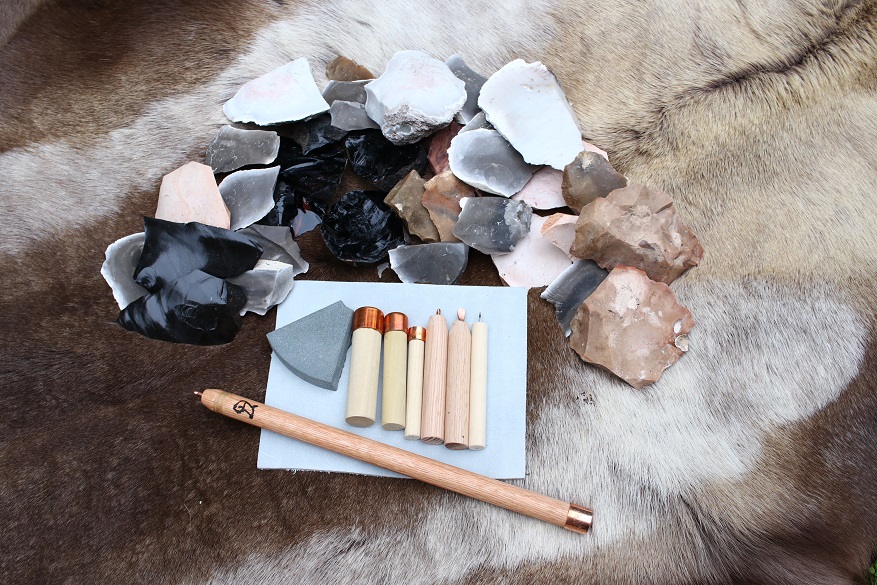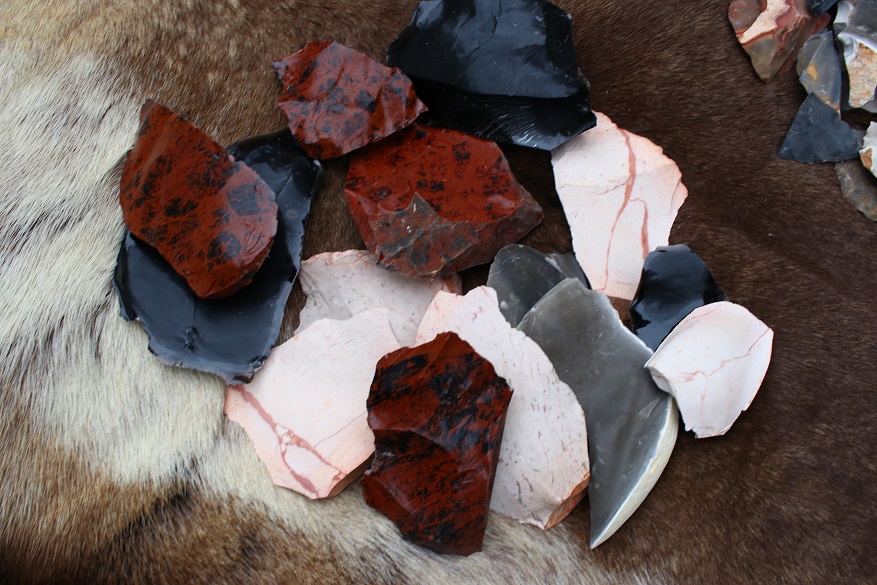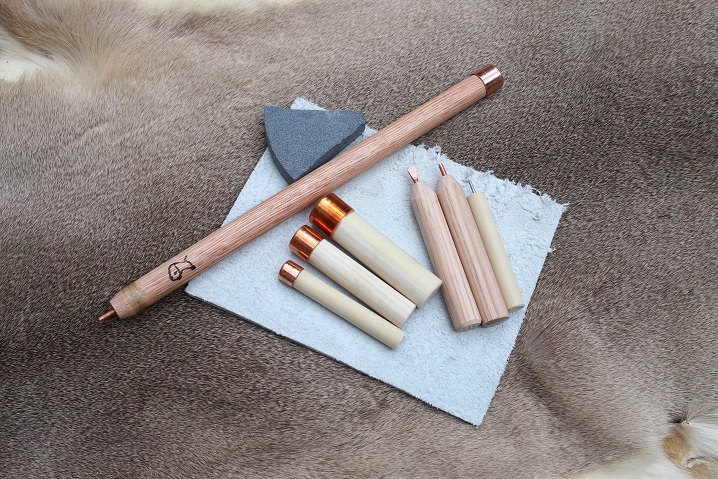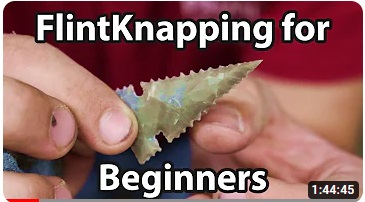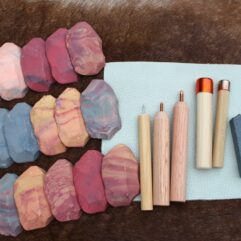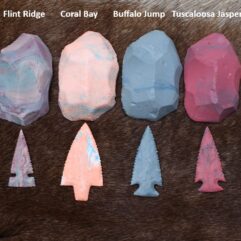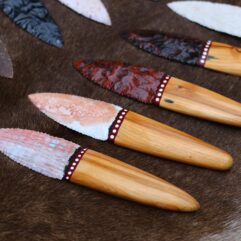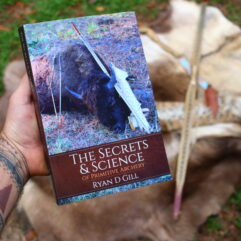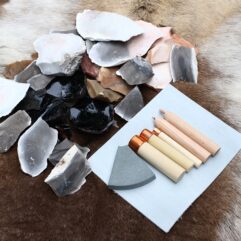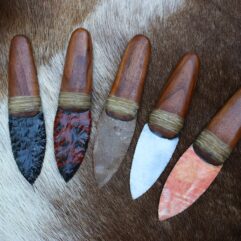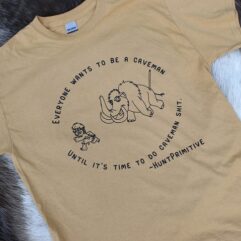Everything you need for your Flint knapping supplies! Starter kits, copper & antler tools, and many types of flint, chert, & obsidian.
HuntPrimitive is constantly working hard to make sure we have the Flint knapping supplies you need to be the best flintknapper possible. With a great assortment of kits, individual copper and antler tools, and several thousands of pounds of premium chert, flint or obsidian on hand, if you need it, we probably have it. We also focus on keeping everything in stock and ready for quick processing and shipping times!
For Rock and Tool combo sets, you can click this link to be taken directly to that page.
Consider our new KnapEasy kits to get a great start to your flintknapping journey! Click here to be taken to our KnapEasy page that has helped many begin knapping with very consistent materials!
For Links to all our current Rock options, click the links below.
Obsidian Flakes and Spalls click here
Keokuk chert click here
Mixed Flakes and Spalls click here
Whole Nodules of rock click here
To order tools kits or just individual copper tools, you can click this link to be taken directly to that page
To order abo (antler and stone) tools or tool kits, you can click this link to be taken directly to that page.
This link will take you to our FREE Helpful Flint knapping videos page. These are perfect videos to get you started on the right path!
Flint Knapping was a critical skill for early humans across the globe. The ability to remove flakes of rock to create a sharp edge shaped our evolution. Flint knapping in finer detail allowed for the specific shaping of tools and edge work for specific tasks. Knapping was essential for create projectile points, knives, scrapers, gravers, drills, and many other tools. Flintknapping is still relevant today. Experimental archaeologists, primitive enthusiasts, and survivalist still practice these skills for a myriad of reasons to enrich our lives.
Below is an excerpt from my book "The Secrets & Science of Primitive Archery". It gives a little further insight to the importance of flint knapping and heat alterations. This may also help you choose some of your own flint knapping supplies depending on the direction would like to continue your journey.
Flint Knapping and Heat Alterations
We could write an entire book just on knapping flint. However, the absolute best instruction for flintknapping is one-on-one or video instruction. That is why I have devoted quite a bit of time to teaching flintknapping via video on the HuntPrimitive YouTube channel and at HuntPrimitive.com. Rather than discuss all the knapping techniques, I will cover some important things not often talked about in knapping and how it relates to making deadly projectiles.
We use the word flint today as a general term for rocks with high silica content or cryptocrystalline. True flint is classified as a cryptocrystalline formed in nodules in chalk deposits. True flint occurs in Europe; however, the closely related cousin is chert which is essentially the same thing but occurs in limestone. The composition is so similar that we are splitting hairs with semantics. Here in America, we have a huge array of sedimentary chert, agate, jasper, chalcedony, and volcanic rocks like obsidian, dacite, porcelanite (coal-fired), and basalt. The number of stones in North America that break with a conchoidal fracture is nothing short of mind boggling, yet they are not always easy to find. It was of great interest to me to put together a state by state map of rock quarries suitable for knapping. That may happen in a future edition, but it will take years to put together and collect data accurately. Projectilepoints.net is producing something very similar, so I highly recommend their website as a means of learning more about the knappable stones in your area. If you want to break them down by specific locations and traits, there are thousands of quarries. A person could spend a lifetime just learning about all the different varieties. The workability of these stones is all very similar. The same techniques used to knap agatized coral in Florida are nearly identical to how we work obsidian from Oregon or Edwards Plateau chert from Texas. The mechanics of flintknapping are based on the same principles. We can see through the artifacts in different regions that the tools and micro techniques vary a little between both region and time; however, the idea of chipping cryptocrystalline rocks into projectiles and blades remains constant even if the details are slightly different.
The main methods of flake removal can be classified as direct percussion, indirect percussion, and pressure flaking. Direct percussion utilizes a hammerstone or antler/ivory billet to directly strike the rock to remove a large flake. Indirect percussion uses a long piece of antler or a piece of antler/ivory set into a piece of wood, pressed against the piece of rock. Then the antler or wood shaft is struck with a wooden mallet to remove a precise flake larger than that can be removed by pressure flaking alone. Pressure flaking is simply using a tine of antler or other similar material and pressing with force and chipping away smaller flakes of rock. The course of construction typically begins with direct percussion and may move into indirect percussion or even skip this stage altogether. Final edge work is done with pressure flaking. Novice modern knappers often skip the indirect percussion stage and focus on learning the basic mechanics of direct percussion and pressure flaking. As we get more advanced in knapping, we see more indirect percussion work in place of the other methods. In some instances, final edge work is done solely with indirect percussion, and no pressure flaking is necessary. Indirect percussion is relatively new in modern times, but I suspect it was heavily used in ancient times. Skilled modern knappers like Patrick Blank and Martin Rueter have taught, demonstrated, and made popular indirect percussion techniques. I later picked up some of these methods and found ways to alter them to fit my styles and increase my skill level considerably. Studying a vast array of artifacts makes it likely that indirect methods were extensively used more than any other methods even as early as the Paleolithic period. Each method created its unique flake scar signature. Many of the flake scars I produce with indirect percussion mirrors that of ancient artifacts—those which I have never seen replicated by pressure or direct percussion alone. I give massive credit to the folks that have re-pioneered various indirect percussion techniques.
People also used fire to alter many of the rocks. Volcanic rocks are already superheated and don't benefit from heat treating. The sedimentary cryptocrystalline rocks often benefit from being buried in sand and cooked for an entire day below the fire. That makes the rocks significantly glassier or waxier in texture, allowing for longer flakes and sharper edges. Each rock type takes a different amount of heat, which is a science within itself. Some benefit from a light cook of about 400 degrees, while others require 600-650 degrees to see the benefits of heat treating. That is something that early people discovered and learned how to do under fires with no way of measuring the temperature. Today we can use kilns to regulate the temperature and time for a perfect cook with little loss. I began my journey of heat treating rocks by cooking them underground as early people did. Like anything else, you simply have to do it and get a feel for what the coalbed and sand depth look like to achieve optimal results. Often rock gets overheated and explodes or doesn't get heated enough and needs to be recooked. It is an experience and intuition-based process that must be learned through trial and error yet has exceptional results once mastered. Rocks that are marginal in quality or workability can be turned into very glass-like rocks that take a very sharp edge and can be knapped very cleanly.
Heat treating often alters the stone's color, and although the color doesn't aid in the stone's ability to perform, we often do get some beautiful colors from heat treated agate and jasper. When looking at local artifacts, you might see a specific color scheme yet never see a single rock in the area of the same color. That is likely because it has been heat altered. A great example is that many jaspers are yellow or tan when raw and turn a deep red when heat treated. Agates or chalcedony are often clear when in their raw state and turn milky or opaque when heat treated. When examining the archaeological record, heat treating is easily identified by drastic or subtle changes in color or texture.
Heat Altering became more widespread in the Archaic period, with a few examples of heat-altered jasper in the late paleolithic or transitional paleolithic periods. Some points in the woodland period can still be made of raw stone. Still, almost all contextual arrowheads in the Mississippian period made from sedimentary cryptocrystalline rocks are chipped from heat altered stones. There are certainly many exceptions to that rule as some chert deposits are exceptional in quality and require no heat. Still, heat alteration seems to be of standard practice throughout the correlating periods when the bow and arrow saw the most widespread use. Heat altering rocks to create very clean and sharp edges is another high degree of advancement in optimizing the performance of the bow and arrow system. Points made from either high quality raw materials or expertly heat altered materials are typically of exceptional quality and sharpness. Early peoples clearly understood the value in a material that wasn't just "good enough" but exceptional in form and function.
Notes on Quartz and Quartzite (and even most basalt): Some Quartzsites make a decent point, but typically quartz is a last resort type of stone to knap. Many quartz point artifacts exist in places of poor rock resources. There are very few examples of very well made quartz points, and quartzite pieces are typically more related to knife blades or atlatl projectiles. Quartz and quartzite do not lend well to making efficient arrowheads.
I truly hope all this information is a help in choosing which flint knapping supplies are best for you! Whether you choose antler or copper tools, I am sure you will enjoy your journey like countless others.
